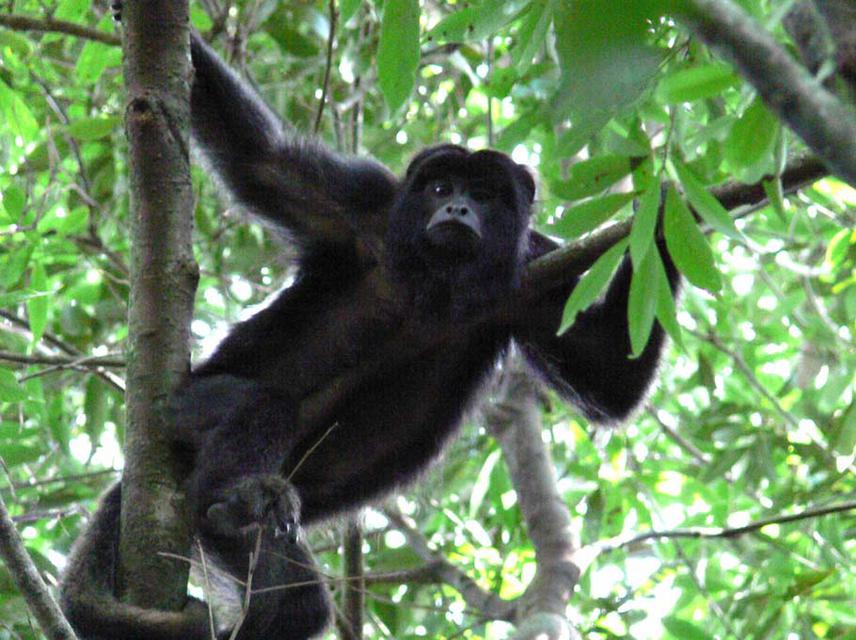Ingrid Holzmann
The project’s aims are to estimate the density of A. guariba in Misiones and to conduct the first long term comparative study of the behavioral ecology of this species in Argentina.

A joung adult male (A. caraya), “Picciotto” resting in the forest. ©Ilaria Agostini.
The brown howler monkey, Alouatta guariba, is one of the several endemic primates of the Atlantic Forest hotspot of South America that are threatened as a result of widespread destruction of their habitat. In Argentina, a small population of brown howler is found in the portion of the Atlantic Forest of the Misiones province. However, there are no population assessments of this rare species and only two small protected areas (El Piñalito Provincial Park and Cruce Caballero Provincial Park) are known to contain groups of this species in Argentina. Both protected areas, with a distance of 30 km between them, present differences in vegetal structure resulting, in part, from a different land use in the past.
El Piñalito provincial Park has been logged in the past and nowadays exotic pine (Pinus sp.) and Eucalyptus sp. can be found within its boundaries, unlike Cruce Caballero Provincial Park which remains as a pristine area with primary Araucaria Pine forest. The project’s aims are to estimate the density of A. guariba in Misiones and to conduct the first long term comparative study of the behavioural ecology of this species in Argentina. The information gathered in this study will allow me to evaluate the range of behavioural and ecological variability of this population of brown howler monkeys and also I will be able to help to develop a Population Viability Analysis, in order to establish a management plan for this endangered species in Argentina.